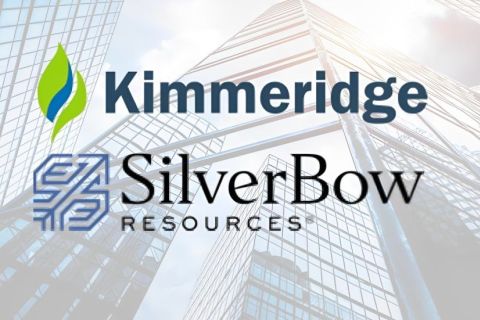According to a Norwegian linguist, the Sami people, who live in the Arctic in the northern parts of Russia and Scandinavia, have 180 words related to snow and ice. There are days when it feels as though there are nearly as many terms for investing in a way that incorporates longer-term factors—socially responsible investing, sustainable investing, responsible investing, ESG (environmental, social and governance) investing, impact investing, mission-related investing, etc.
There is a key difference between our investment lexicon and that of the Sami.
Each of the Sami’s 180 terms has a very specific meaning. While we may have ideas about what each of our investing terms mean, there is not one dictionary that makes it clear. Without a common lexicon, we expose ourselves to confusion and miscommunication.
To dispel some of the noise in the world of investment terminology, allow me to explain, in detail, one of these terms: impact investing.
The impact investing space is an ecosystem of people and organizations. The experts from this ecosystem produce a range of ideas, perspectives and practices that are shared and cross-pollinated. A number of players in the impact investing space have articulated their approach to impact investing both through reports and case studies, with notable reports from groups like the Croatan Institute and Sonen Capital. As you would expect, our approach has been informed by the great work that has come out of the impact investing ecosystem. The approach we take at Federal Street Advisors, as outlined here, is how we see fit for our clients to add impact.
Finding a definition
The term impact investing seems to pop up everywhere these days—from David Brooks’ recent piece in the New York Times on the importance of impact investing to President Obama’s recent executive action aimed at spurring investment into the impact space. While impact investing is a term that seems to be everywhere, it is not always clear what is meant by it. At a most simplistic level, impact can be defined as “the effect of one person, thing or action on another.”
Impact investing takes this simple term and puts it into an investment context. The Global Impact Investing Network states that “impact investments are investments made into companies, organizations and funds with the intention to generate social and environmental impact alongside a financial return.” As we see it, impact investing is a way to invest that furthers personal values or organizational goals.
While these definitions are broad and leave room for a wide interpretation, the reality is that there are many who take a narrower view of impact investing. There is a commonly held thought that impact investing should be done exclusively through direct, private investments where the investment can be targeted and the impact clear—the investment can be linked with a specific number of jobs created or emissions reductions. Others may think of impact investments as those where the desired return on impact supersedes the desire for a market rate return on investment.
These distinctions can be the source of tension among factions of investors. Arguments over which types of investments are most impactful are distractions and take focus off the common goal of achieving impact. At Federal Street, we believe that all investors can achieve market-rate returns while also achieving impact goals—not just in direct investing or through private equity, but across the portfolio in equities and fixed income. This means that no matter the size of the assets, any investor can have impact.
Direct, private investments
Private investing is an area in which impact can be achieved through individual projects (direct deals) or pooled vehicles (funds). It is also what many investors are thinking of when referring to impact investing.
In direct deals or those that fund specific companies or projects, investors can provide capital directly to a particular company that is achieving a desired impact and return. These types of deals enable investors to be very targeted in their quest for impact, but are not without challenges. Direct deals often require a significant amount of due diligence, which can be too costly or burdensome for some. Direct deals also tend to be suited to clients with larger asset bases who can more easily withstand the limited liquidity or speculative nature of many of these types of opportunities.
For these reasons, direct deals are often very client-specific and require investors and investees to be in the right place at the right time, with similar objectives. When these types of opportunities come together, it can be extremely rewarding, both from a financial and impact perspective, but they are not suitable for every impact investor.
Another option for investors in the private space is private equity funds. Investors can choose to invest in funds that have a particular impact theme or with a fund that is seeking both financial and impact returns. The fund manager will then place the capital into companies whose work is aligned with the theme of the fund. In addition to reporting out to investors on financial metrics, these fund managers will also report out on impact metrics. Depending on the aim of the fund, these metrics might highlight the number of jobs created, emissions reduced, or low-income students served.
Extra risk
While impact may be easy to see in this asset class, it is not without risks. Many impact-driven private equity managers are new to the space and don’t have a track record. Few private equity managers are experienced in both private equity and impact investing. Furthermore, the common 10-year lock-up period for these opportunities makes them less suitable for some investors.
In the private equity space, we prefer to work with managers who are experienced both in private equity and in their specific area of impact—this helps ensure that our clients see their returns on both the financial and impact fronts.
Public equities
Public equity investing allows investors to voice their endorsement or withhold support for a particular issue or company—either through pooled vehicles or separate accounts.
There are many mutual fund managers in the public equity space who have an impact both through stock selection and engagement with companies. In terms of stock selection, managers can avoid investing in companies that are in conflict with the client impact goals. For example, a client that is seeking to address climate change may want to work with a manager who will avoid investing in companies whose products have significant carbon emissions or whose business model is dependent on the continued use of fossil fuels.
A manager who seeks to have impact through engagement will actively and thoughtfully vote proxies and engage companies on issues of client concern. In the case of a climate-concerned client, we would look for a manager who is voting proxies in support of proposals seeking increased disclosure of climate risks and is encouraging companies to take steps to reduce their operational carbon emissions or the emissions associated with the use of their products.
It should be noted that on some impact issues—such as climate change, LGBT equality or access to nutrition—there are mutual funds actively at work. For some more specific impact goals, such as those tied to geographic areas or issues less clearly linked to financial risk or opportunity, it can be difficult to find a manager actively addressing the issue.
In these cases, it may be appropriate to find a manager whose stock selection, either in a fund or separate account, “does no harm” in relation to the client’s impact goals. In a separate account structure, it may also be possible for the client to screen out concerning companies and engage directly with companies on their specific issue of concern.
While an individual investor who chooses to engage with a company may struggle to change a company’s perspective on a particular issue, the simple process of asking a question can be very meaningful. A company may not have thought about the specific topic when it is first asked, but may give the topic some thought and have a better answer the second time it is asked.
Furthermore, it is possible that there is an internal stakeholder asking similar questions. Having an issue raised by an external stakeholder can sometimes give the internal stakeholder the political capital they need to make headway on the issue.
Quantifying impact
Increasingly, impact-oriented equities managers are seeking to quantify their impact. One manager we work with has approached this by reporting on the number of companies he speaks with each year and, of those he “touches,” how many show a marked improvement on an issue discussed. This figure gives an indication regarding the impact or success rate of company engagement across the portfolio. Other managers may prefer to take a deeper dive on one specific issue.
This type of impact is generally geared toward a particular outcome, such as ending deforestation related to palm oil production. These types of campaigns tend to take many years and the impact may be difficult to discern in the near term, but may lead to meaningful outcomes in the long term.
In addition, the Impact of Equity Engagement Project, a multi-stakeholder project, is currently underway to develop a common framework for public equity investors to better document the impact of their engagement. We look forward to seeing increased impact reporting from public equities managers in the coming years.
Fixed income
Fixed income offers a great opportunity for the portfolio to have an impact because of the nature of bonds. Bonds represent debt provided to fund specific organizations (generally companies or governments) for a set period of time and defined interest rate. Without bonds, many municipalities would not have the resources to upgrade or replace aging infrastructure.
When looking to have an impact in fixed income, we suggest that clients work with a manager who is willing to incorporate impact goals into bond selection. In the case of a client who is interested in having an impact related to water access and sanitation, a bond manager may include bonds in the portfolio that specifically address these issues while also excluding bonds from the portfolio that have concerning environmental features.
The ever-growing green bonds market has increased the impact opportunities available to those looking to purchase bonds that have some sort of environmental focus. Green bonds finance environmentally beneficial projects and may be either explicitly labeled as “green” or include a reference to the environmental benefit in the bond description. While some green bonds are greener than others, and all require scrutiny from an environmental perspective, we are encouraged to see bonds that are clearly aligned with some of our clients’ environmental impact goals. We expect to see continued opportunity for environmentally oriented impact investors in this space.
While some impact goals are easier to address across asset classes than others, we believe that there are ways to address nearly all impact goals in one form or another across the investment portfolio.
Impact investing is a newer area in the investment space, but I believe that our approach helps our clients have an impact while avoiding potential pitfalls. To use the words of the Sami, we want to help our clients achieve their impact investing goals while avoiding the moarri (the kind of snow or crust of ice that cuts the legs of reindeer) and find a path that is veadahat (a nearly bare patch where snow has been blown away) that allows for clear passage to both financial and impact returns.
Recommended Reading
1Q24 Dividends Declared in the Week of April 29
2024-05-03 - With earnings season in full swing, upstream and midstream companies are declaring quarterly dividends. Here is a selection of dividends announced in the past week.
Analyst Questions Kimmeridge’s Character, Ben Dell Responds
2024-05-02 - The analyst said that “they don’t seem to be particularly good actors.” Ben Dell, Kimmeridge Energy Partners managing partner, told Hart Energy that “our reputation is unparalleled.”
Tellurian Reports Driftwood LNG Progress Amid Low NatGas Production
2024-05-02 - Tellurian’s Driftwood LNG received an extension through 2029 with authorization from the Federal Energy Regulatory Commission and the U.S. Army Corps of Engineers.
Zeta Energy Appoints Michael Everett as COO
2024-05-02 - Prior to joining Zeta Energy, a lithium-sulfur battery developer, Michael Everett previously served as president and COO at Advanced Battery Concepts.
Shell Launches $3.5 Billion Share Buyback Program
2024-05-02 - Shell, which posted first-quarter adjusted earnings of $7.7 billion, will cancel all of the shares it buys.





